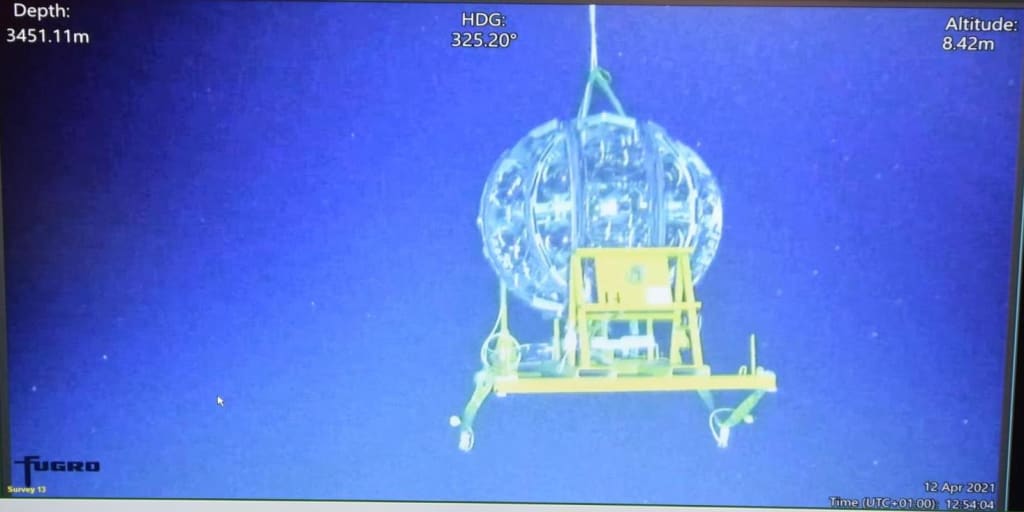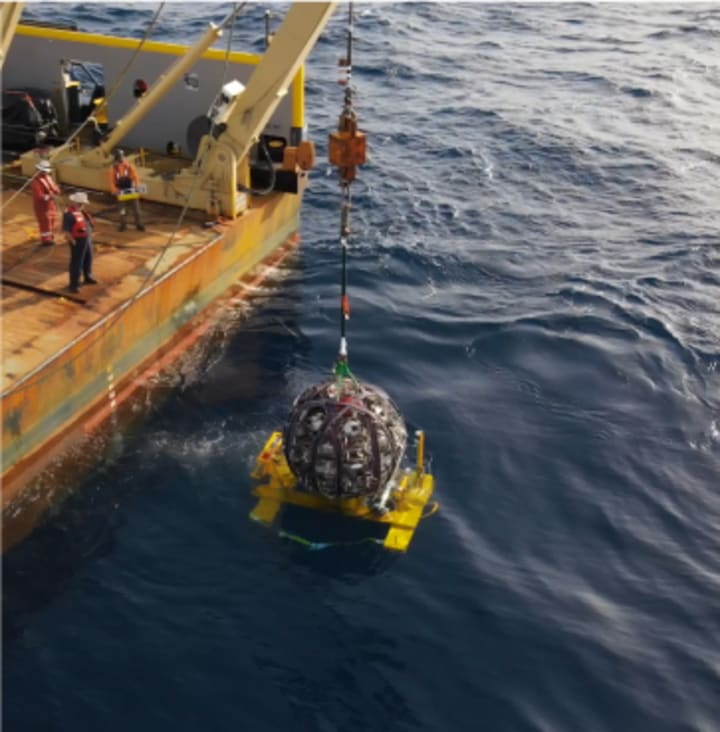Telescope at the BOTTOM OF THE SEA!
New technology explanied!

The best method to observe what is in space is through telescopes, which are used all around the world, but did you know that there is also one being constructed for a very different use — a telescope at the bottom of the sea.
This research infrastructure will house telescopes that aren’t designed to look at lights like the ones we’re more familiar with, but instead will be looking through the water at neutrinos. The km3 net is a next-generation deep-sea research facility that is being built between 1.5 and 3 miles deep in the waters of the Mediterranean ocean.
Two telescopes will be used: one, called ARCA, will enable researchers to look for neutrinos that have been created by far-off astrophysical sources like gamma-ray bursts crashing stars in supernovae.
Learning more about the characteristics of neutrinos that have been created in the Earth’s atmosphere is the main goal of the Orca telescope, the other one.
First, what are neutrinos? You may be familiar with basic particles like electrons, but you may not be as familiar with neutrinos, despite the fact that they are one of the fundamental components that comprise the cosmos. Enrico Fermi, who established his theories on radioactive decay in 1934, gave them their name after first theorizing them in 1931. He correctly identified an unseen neutral particle that took energy away from the process and gave it the moniker of the little neutral one war neutrino, which had previously been a puzzle as to why energy and momentum warranted conservation in some radioactive decays.

It would take another 25 years before a neutrino was definitively detected for the first time and discovered to be an electron’s mate. Since neutrinos are electrically neutral while electrons have an electric charge, they are unaffected by electromagnetic forces.
There are only known to be weak subatomic forces, which have a considerably smaller range than electromagnetic, that can affect them. In contrast to electrons, which can only go a finite distance through matter, photons can travel great distances through objects. As a result, they are very challenging to find.
There are three distinct flavors or sorts of neutrinos, each of which is connected to a certain kind of electron.
The muon and the tau neutrinos are connected to heavier versions of electrons, while the electron neutrino is the simplest and is associated with electrons.
So how do the km3 network ARCA and worka, which are not your typical telescopes and were created to raise the likelihood of worthy neutrinos, work?
Due to their neutral nature, the particles don’t interact with matter very frequently; in fact, one particle that knows about them passes through a fingernail per second.
But I’ve discovered that on those rare occasions when they do interact with matter, they make anything that is electrically charged.
A neuron particle causes a detectable optical light call that resembles a sonic boom because it travels through water more quickly than that we perceive. And since this is what the telescopes are searching for, the route of a neuron as it passes through a detector may be recreated by determining the time at which the light arrives. And in order to achieve this, km3 nets, which will eventually consist of 10,000 optical modules made of photomultiplier tubes and pressured glass spheres, will be positioned across 600 detection units that are each 700 meters long and 100 meters apart.
The sensors are installed at depths of many miles to eliminate interference from other light sources, and the Mediterranean is ideal due to the optical properties of the water and the proximity to land to ensure the large amounts of data can be transferred to land as needed. As a result, this array will be able to closely monitor a cubic kilometer of water. Importantly, only neutrinos can go through the center of the planet, thus all sensors are oriented below rather than upward to prevent interference from other sources.
What exactly is our researcher looking for after all this setup work? Along with the ice cube in Arctica, this will be the second neutrino telescope specifically constructed, and the findings from the two are anticipated to shed further light on these particles.
They are also very unique because they rarely interact with anything, making it difficult to discover them. They may be exceedingly old if they provide data that dates back billions of years. They are the only particles capable of providing information from the cores of astronomical objects and the very beginnings of the universe.
The study of neutrinos is expected to quickly advance our knowledge of the cosmos, our origins, and contribute to our comprehension of those processes that are still a mystery to us.
The new underwater telescope is therefore extremely different from what you may typically imagine, and even though it will be pointed in the direction of the Earth’s core, it represents the pinnacle of experimental design for observing the cosmos.
About the Creator
Tadija Jokic
I am Military Medical Academy student from Serbia and I really enjoy writing articles. This website is awesome for someone like me and I am looking forward to stay consistent with my projects. I would really appreciate a follow or like!





Comments
There are no comments for this story
Be the first to respond and start the conversation.